Mountain Ranges of Brazil
Brazil is a vast country with diverse geography, but it is primarily known for its extensive lowland areas and the Amazon Rainforest. Brazil's mountains are predominantly found in the southeastern and southern regions of the country. These ranges include cliffs, dense rainforests, and high-altitude plateaus.
Mountain Ranges of Brazil
Brazil is a vast country with diverse geography, but it is primarily known for its extensive lowland areas and the Amazon Rainforest. While Brazil does not have extensive mountain ranges like the Andes in South America, it does have some notable mountainous regions.
Brazil's mountains are predominantly found in the southeastern and southern regions of the country. These ranges include cliffs, dense rainforests, and high-altitude plateaus. The mountains contribute to the country's rich biodiversity, with many of them forming part of the Atlantic Forest, a critically important biome.
Major Ranges
-
Serra do Mar: The Serra do Mar is a coastal mountain range parallel to the Atlantic Ocean in southeastern Brazil. It stretches across the states of Rio de Janeiro, São Paulo, Paraná, and Santa Catarina. The Serra do Mar is characterized by cliffs, lush forests, and a rich diversity of flora and fauna. It is an essential ecological zone and is part of the Atlantic Forest, one of the world's most biodiverse regions.
-
Serra Geral: The Serra Geral is a continuation of the Serra do Mar and is also located in the southeastern region of Brazil. It covers parts of the states of Santa Catarina, and Rio Grande do Sul. The range is known for its dramatic escarpments, deep valleys, and rugged landscapes.
-
Serra da Mantiqueira: The Serra da Mantiqueira is a mountain range located in the southeastern part of Brazil, covering parts of the states of São Paulo, Minas Gerais, and Rio de Janeiro. It is known for its picturesque scenery, with many peaks exceeding 2,000 m (6,561 ft) in elevation. The region is popular among hikers, trekkers, and nature enthusiasts.
-
Serra do Espinhaço: The Serra do Espinhaço is a mountain range extending across Minas Gerais and Bahia in eastern Brazil. It is one of the most extended mountain ranges in the country, running for over 1,000 km (620 mi). The Serra do Espinhaço is known for its diverse landscapes, including rocky plateaus, grasslands, and cerrado (savanna) ecosystems.
-
Serra dos Órgãos: The Serra dos Órgãos is a mountain range located in the state of Rio de Janeiro. It is known for its unique rock formations and picturesque peaks, attracting hikers and climbers. The range is also home to the Serra dos Órgãos National Park, a protected area known for its biodiversity and scenic beauty.
Minor Ranges
-
Serra da Bocaina: The Serra da Bocaina is a smaller mountain range located on the border between the states of São Paulo and Rio de Janeiro. It is known for its rugged terrain, dense forests, and numerous waterfalls. The Serra da Bocaina National Park protects the range's natural beauty and biodiversity.
-
Serra da Canastra: The Serra da Canastra is a range in Minas Gerais. It is famous for its cliffs and valleys and the stunning Casca D'Anta waterfall, which drops over 186 m (610 ft). The Serra da Canastra National Park protects this unique landscape and is home to the endangered Brazilian Cerrado biome.
-
Serra da Capivara: The Serra da Capivara is a small mountain range in the state of Piauí. It is renowned for its archaeological significance, containing thousands of prehistoric rock paintings, some dating back more than 10,000 years. The Serra da Capivara National Park preserves this exceptional archaeological heritage.
-
Serra da Ibiapaba: The Serra da Ibiapaba is a range located in the states of Ceará and Piauí. It is characterized by gentle slopes and plateaus, protected by the Serra da Ibiapaba Environmental Protection Area. The range is part of the Caatinga biome, a unique semi-arid ecosystem in northeastern Brazil.
-
Serra do Cipó: The Serra do Cipó is a small mountain range in Minas Gerais. It is known for its picturesque landscapes, including canyons, waterfalls, and crystal-clear rivers. The Serra do Cipó National Park protects the range's natural beauty and diverse flora and fauna.
-
Serra do Maracaju: The Serra do Maracaju is a range in Mato Grosso do Sul. It is part of the Pantanal region, one of the world's largest wetland ecosystems. The Serra do Maracaju offers trekking and wildlife observation opportunities, with diverse plant and animal species in the surrounding savannas and wetlands.
-
Pacaraima Mountains: The Pacaraima Mountains are situated in the northern region of Brazil, near the border with Venezuela and Guyana. They are part of the more extensive Guiana Highlands, which extend across portions of Venezuela, Guyana, Suriname, and Brazil. The range is known for its stunning landscapes, including tabletop mountains (tepui), deep valleys, and unique rock formations.
-
Chapada Diamantina: While not technically a mountain range, the Chapada Diamantina is a large plateau region located in the state of Bahia, characterized by high cliffs, valleys, and waterfalls. The Chapada Diamantina National Park is a popular destination for eco-tourism, offering opportunities for trekking and exploring unique rock formations.
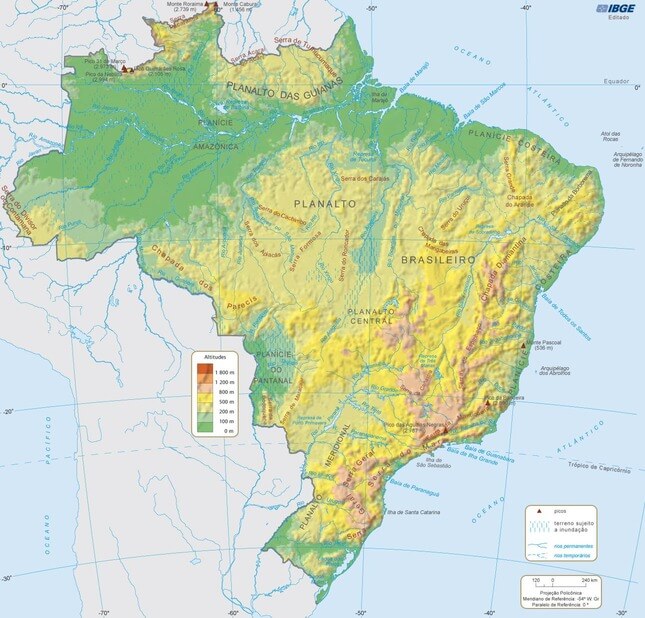
Landform map of Brazil.
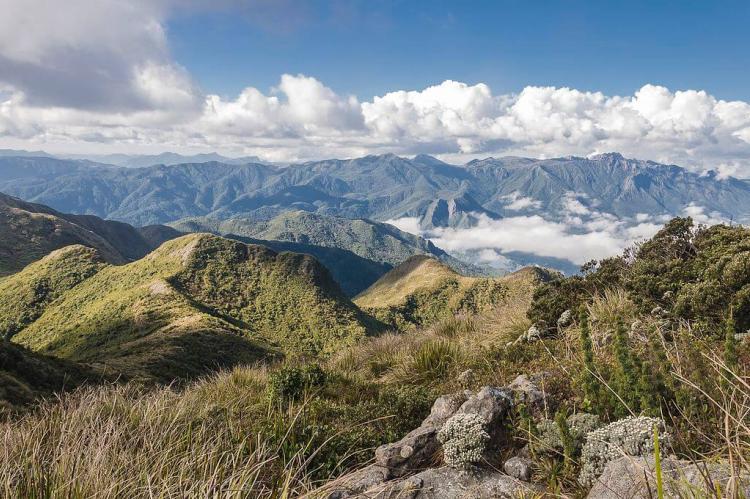
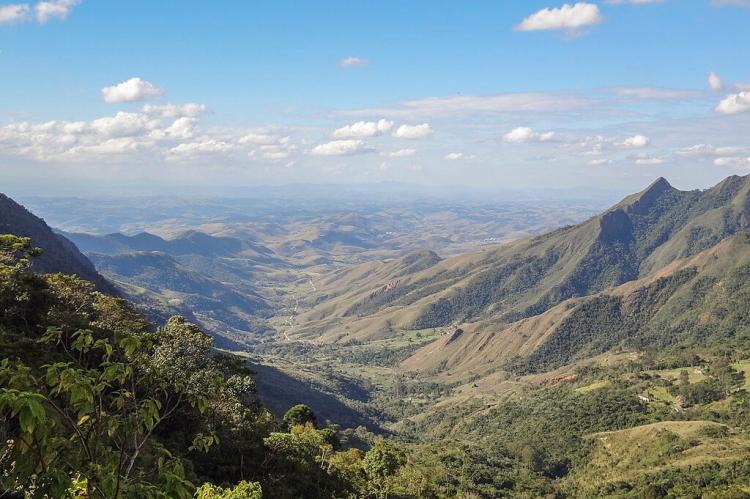

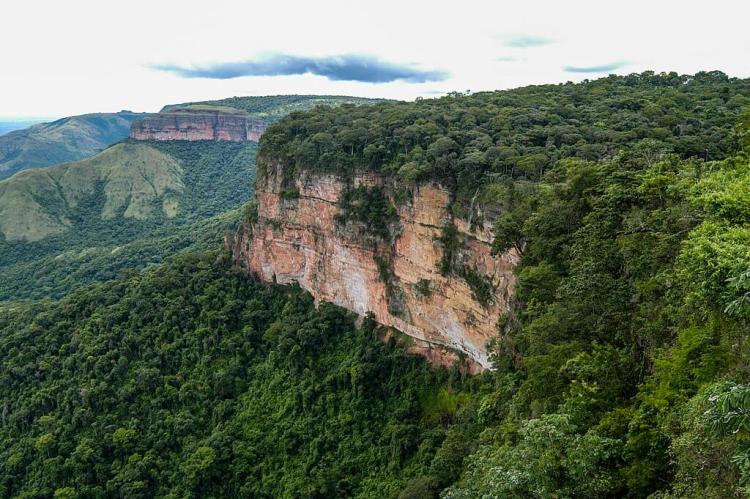
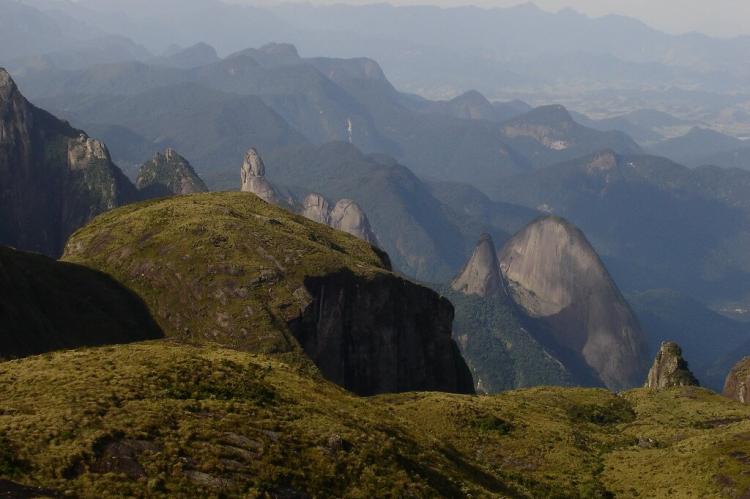
![Espinhaço Range, Brazil - via Wikimedia Commons by regiov [CC BY-SA 2.0] Espinhaço Range, Brazil](/sites/default/files/styles/large/public/serra_do_espinhaco_opt.jpg?itok=UXSKvXbM)